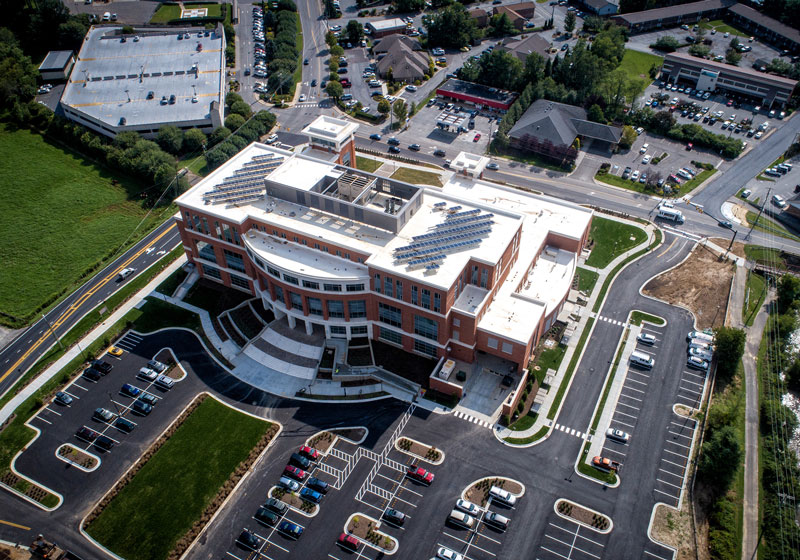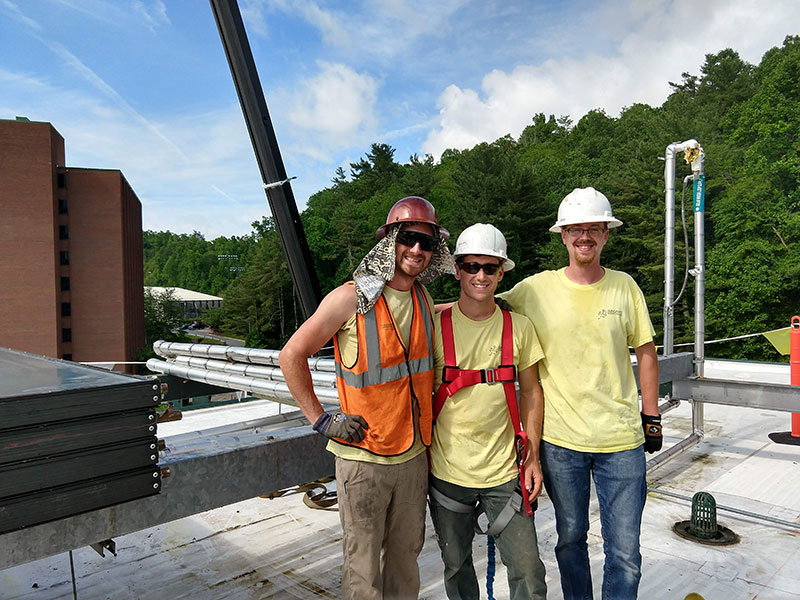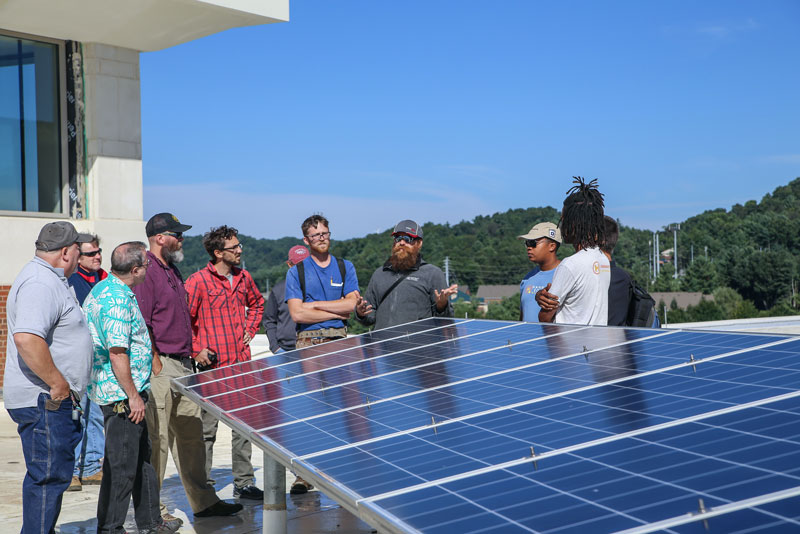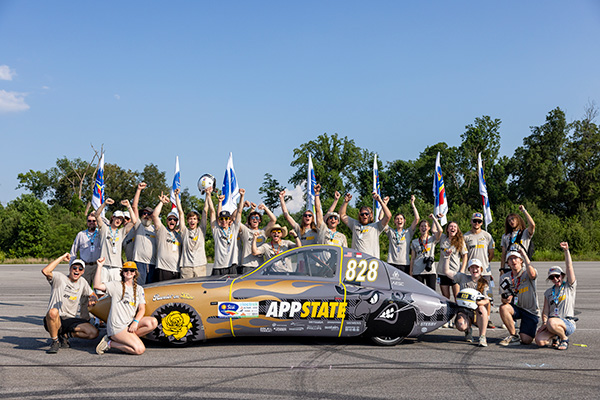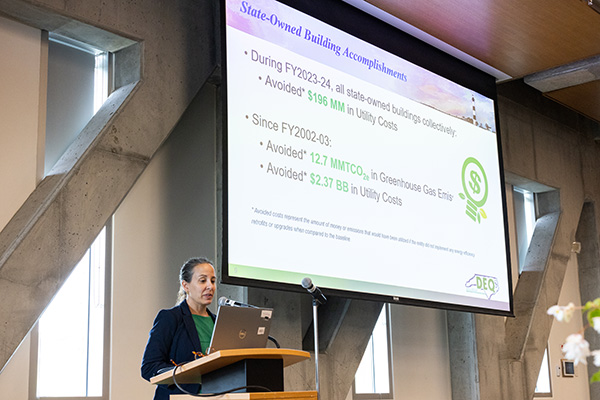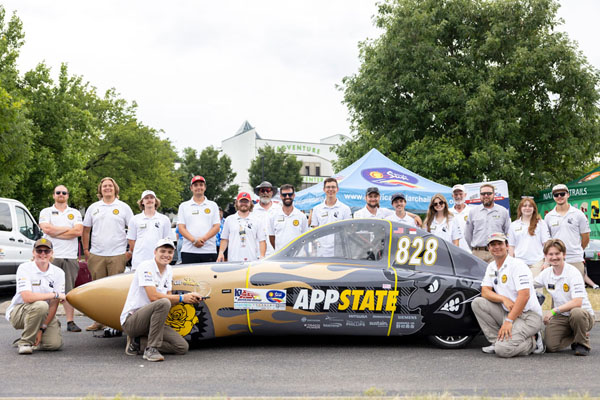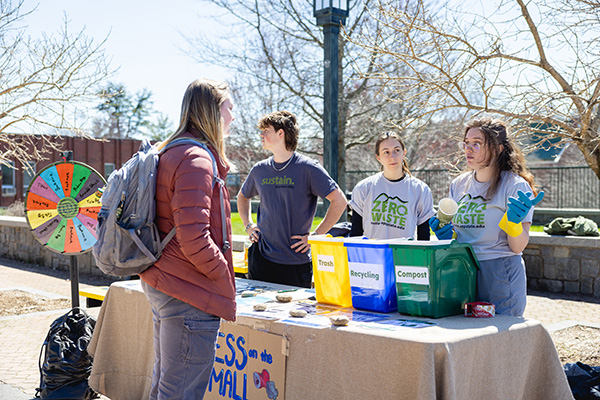Appalachian Adds Two New Photovoltaic Arrays to Campus
Appalachian State added two new rooftop photovoltaic arrays over the summer, a 36 kW system on Frank Hall and a 58 kW system on the new Leon Levine Hall of Health Sciences, almost quadrupling the amount of installed PV on campus. The ASU Renewable Energy Initiative (ASUREI), a student funded and led group, with the help of the Office of Sustainability, the Physical Plant, and Planning, Design & Construction, and Student Affairs, conceptualized and approved the systems, which add 94 kW of solar energy to Appalachian’s renewable energy portfolio, up from 26 kW previously.
With these new systems, there is now more renewable energy installed on campus from solar (120 kW) than wind (100 kW). The Frank and Levine arrays will produce enough power to meet the electricity needs of seven average North Carolina homes.
“I’m proud of ASUREI for voting to fund these projects,” says ASUREI Chair Sierra Milosh. “And I’m proud of the student body as a whole for supporting renewable energy; they have given us a responsibility and we take the mission seriously when choosing projects.”
LEED-gold certified residential building Frank Hall is the first instance of App State transitioning from solar thermal technology to photovoltaic technology, as there was an existing solar thermal system on the building. The former 42-panel system, also installed by ASUREI in 2009, was at the end of its useful life and was not heating water as expected. The steel racking system for the panels, one of the major costs of installing any rooftop system, was still usable. This increased the financial benefit of the project as well as cut the installation time dramatically.
Appalachian partnered with SunDance Power Systems from Asheville to remove and replace the renewable energy systems. SunDance employs many Appalachian State and ASUREI alumni, including three of the installation field technicians, and one of the project’s designers. The system, completed and putting energy on the grid as of July 2018, is comprised of 108 panels and has 36.2 kW of capacity.
The ASUREI saw an opportunity to get in on the ground floor when the Leon Levine Hall of Health Sciences was announced, and drew up and approved plans for a roof mounted PV system. Located beside the Watauga Medical Center, Levine Hall opened officially in August of 2018, crowned by a grid-tied 214 panel array with a production capacity of 57.8 kW. The project was installed by Asheville-based Hannah Solar.
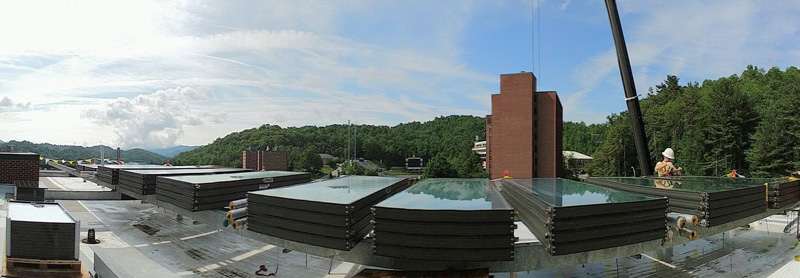
“These systems were 100% funded by students via their vote for a $5 per student per semester fee increase,” stated Energy Analyst and ASUREI advisor Patrick Richardson. “This group, and the Office of Sustainability, have funded all renewable energy projects on campus since 2012.” University Housing and New River Light and Power have also contributed to installation costs.
Following a string of recent small-scale projects to build awareness of renewable energy technology, such as the solar-powered charging tables installed at Peacock Hall in Spring 2018, the group is focusing its attention on bigger capacity systems, such as the Frank and Levine arrays. These ambitious projects will assist the University in reaching renewable energy targets. “We’re excited to be moving towards larger scale PV that can begin to make a difference in App’s energy portfolio,” says Milosh. ASUREI is currently considering projects at the Plemmons Student Union, Holmes Convocation Center, and State Farm Road.

For more information about ASUREI, visit their website. For more information about renewable energy, click here.

